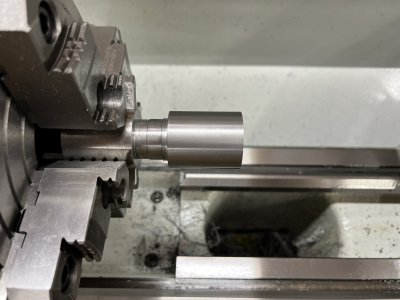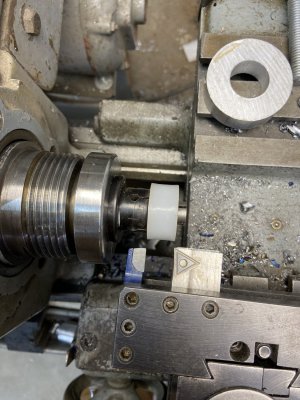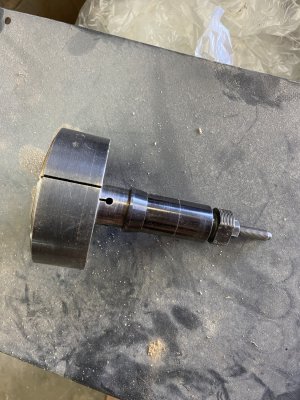- Joined
- Feb 20, 2019
- Messages
- 335
To maintain the truest part, you do all operations without moving it from it's original position. A chuck could have .010" runout but after you turn the OD of the part, the turned surface is now true with machine centerline. You complete ID, so bored hole, threads are parallel to OD, then when you use a parting tool that's hopefully perpendicular to the part and kept short and rigid, the other face is your parted surface.




